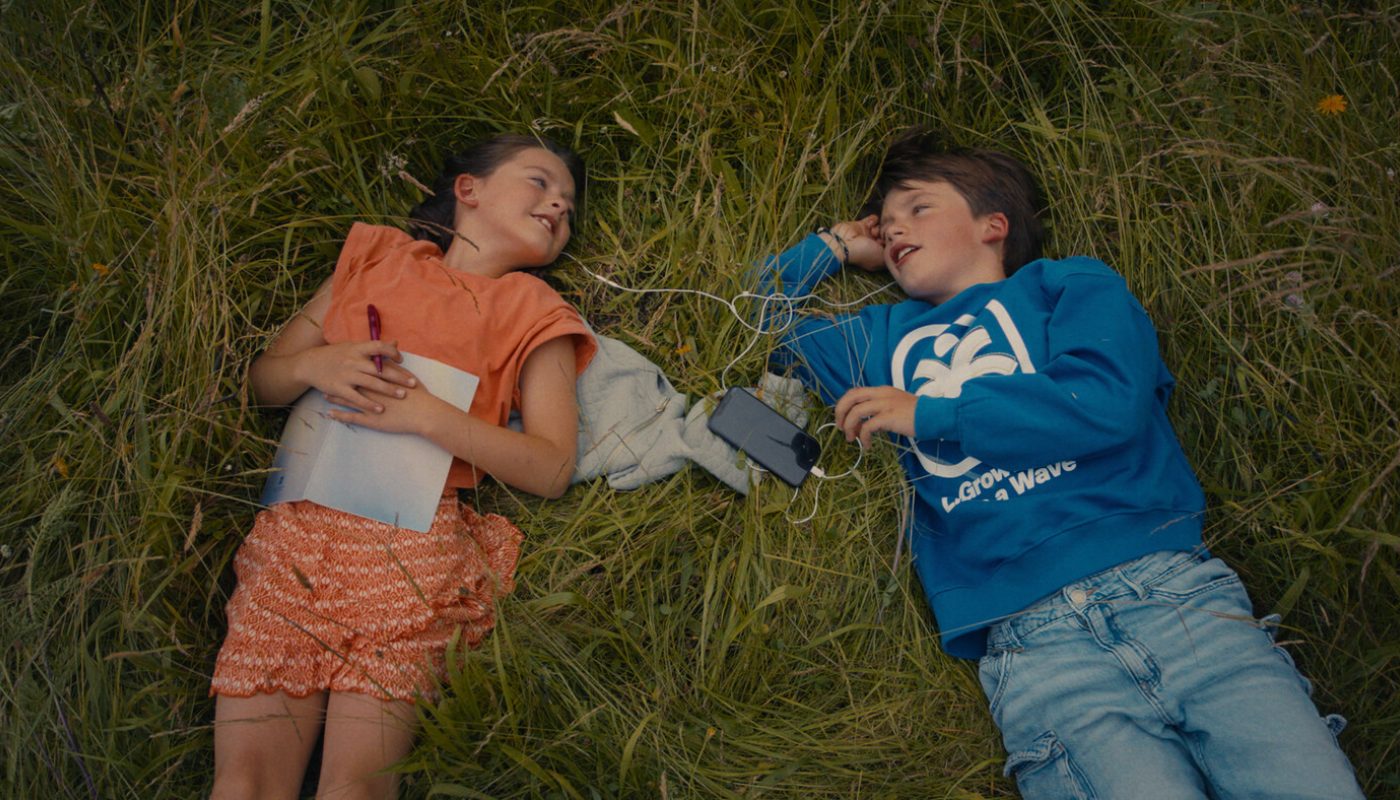

The shortDOCs competition 2025: bold, fresh and deeply moving
Maud Litjens, intern at CineSud, shares her take on the 2025 DOCDAYS shortDOCs Competition.
Geplaatst op 9 oktober 2025As an intern at CineSud and someone who thoroughly enjoys film, participating in DOCDAYS 2025 has been both inspiring and eye-opening. I had the opportunity to write reviews for the shortDOCs competition, whose films offer an insightful glimpse into the minds of emerging documentary makers. The bold, fresh, and sometimes deeply moving selection certainly left an impression on me. I hope you will find inspiration in these memorable works as well.
Ik ben Maud Litjens, filmstudent, filmliefhebber en momenteel stagiaire bij CineSud, waar ik mijn passie voor film verder ontwikkel. Mijn interesse ligt vooral bij filmtheorie en ik schrijf graag over de projecten die mij inspireren.
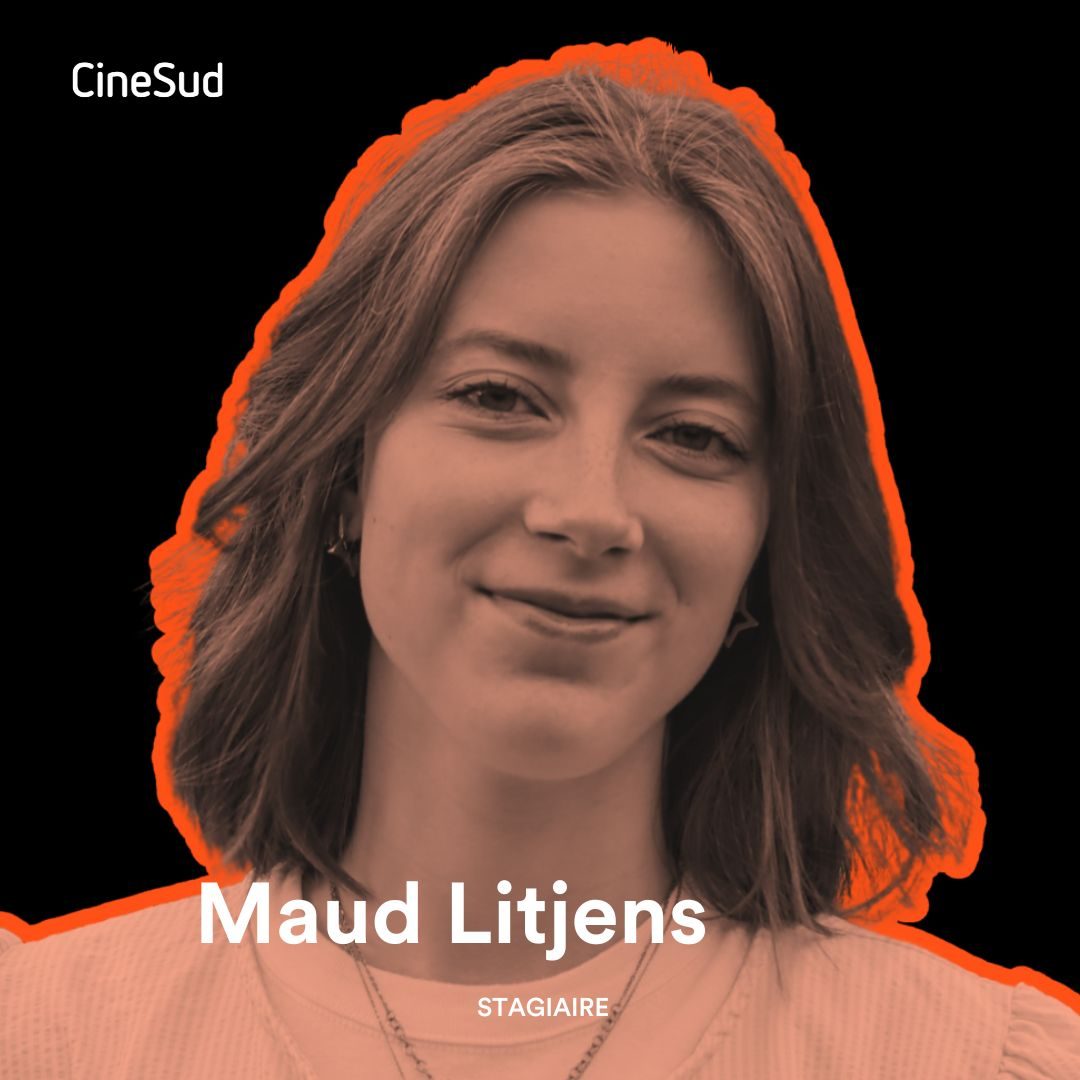
Three Windows on South West - Mariia Ponomarova
Longing for a house that’s no longer home, especially in a war-ridden country, is unfortunately something many people experience. Filmmaker Mariia Ponomarova expresses this feeling in her short documentary Three Windows on South West in an experimental yet heartfelt way. Through three phone calls with family and friends, the apartment in Kyiv, with three windows facing southwest, is shaped as something beloved but lost in memory.
The narrative structure consists solely of conversations over the phone, with loved ones reminiscing about the time spent in the apartment. Ponomarova calls her mother first, who recalls the fear and struggle of moving somewhere new. It becomes clear that they both eventually viewed it as home, unease turned into comfort. Friends, who feature in the second call, bring up nights spent watching movies and seeing the sunrise on the balcony. They view the apartment as a form of freedom, something warm and secure. The apartment also witnessed some romance, as alluded to in the third call. Intimate moments on the grimy rooftop stayed with the two lovers and are remembered with humor.
All the information given allows you to form an image in your head; the film itself never reveals more of the apartment than the windows. It’s definitely open to interpretation, but still aims to make the audience aware. War can turn lived experiences into nothing more than memories. You, as the viewer, have to imagine the actual content of the story. Whether that’s received well is a matter of personal preference.
Visually, the choices made are bold. Using a single image while controlling how much the audience sees works well. This method of storytelling feels very raw, just like the message it’s meant to convey. We feel the impact of the picture more deeply this way, as the filmmaker’s intentions are slowly revealed. A more striking graphic style, through the use of a different font, could have accentuated the overall importance. The sound design is also very simplistic, consisting only of the phone calls. This choice feels understandable, as it avoids influencing the story.
Three Windows on South West is doing what it needs to do. Its unapologetic style is commendable. You feel like you get to know the apartment, the people in it, and the disrupted world surrounding it. The effects of the war in Ukraine are felt deeply, with this film highlighting the people who had to leave their homes behind. It’s still a pressing issue today and this film can definitely shed light on it in a refreshing way.
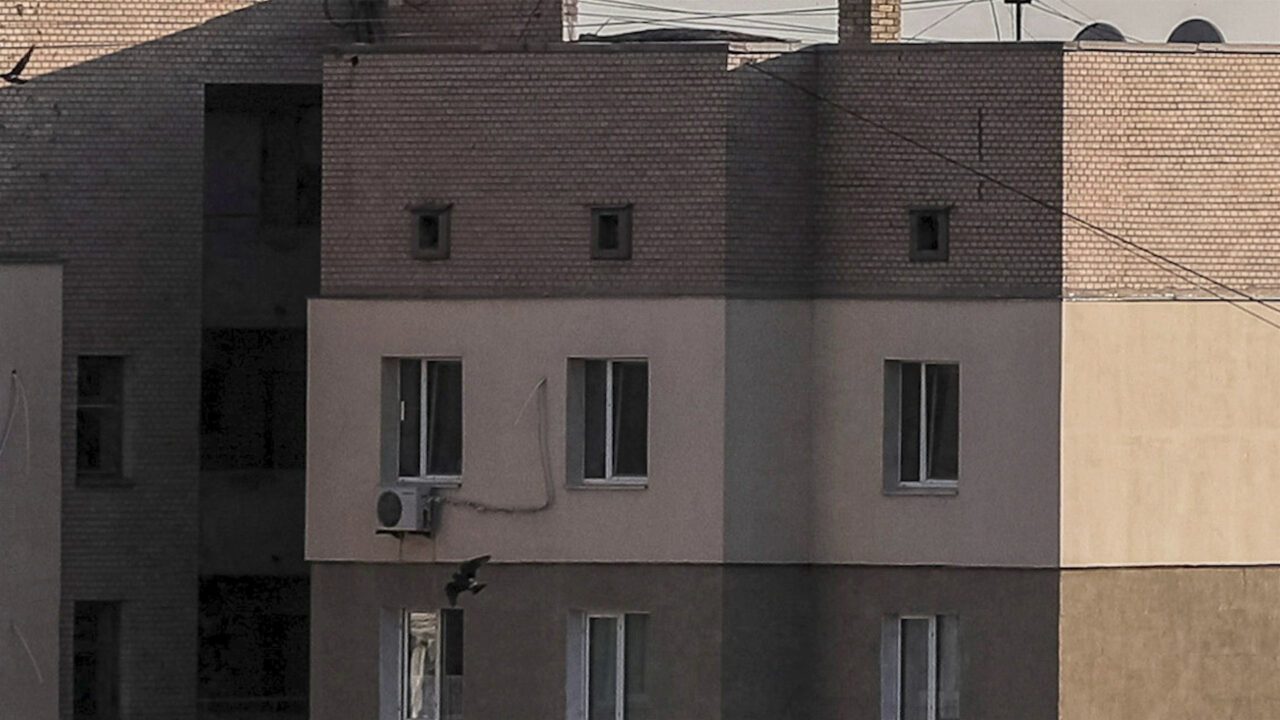
Samenspraak - Sandra Kornips & Douglas Robson
In Samenspraak, two seemingly opposite women come together to form a special connection through both language and experience. This short documentary, directed by Sandra Kornips and Douglas Robson, follows Nimra, an asylum seeker eager to learn Dutch, and Francine, a volunteer tasked with helping immigrants on their language journey.
Through the featured program, an immigrant like Nimra is paired with a native-speaking language buddy. Their regular meetings go beyond practicing conversational Dutch, eventually leading to a meaningful friendship. It’s a compelling concept, with layers worth exploring.
The film’s narrative begins by introducing the two central characters separately, which highlights not only their differences but also their similarities. Nimra is confident and refuses to be judged by her Muslim beliefs, instead presenting herself through her higher education and ambitions. Meanwhile, independent and passionate Francine grew up in a typical Dutch family. Their upbringings could not be further apart, yet what connects them is that both were raised by emancipated mothers. Each woman grew up with the idea that they could choose their own path and should work hard to achieve it, despite the obstacles thrown their way.
It also becomes clear why they chose to join the local organization Samenspraak. For Nimra, learning Dutch is essential, as required by the municipality’s integration rules. If she is unable to speak the language well, her future in the Netherlands is at stake. She also sees the value in learning to express her opinions and communicate with others in a new way. The program seems to suit her, helping her form the connections she is seeking. Francine shows her intentions through action, sharing her enthusiasm for reading or taking Nimra on tours of the city she loves. All of this leads to a tender exchange of care and understanding between the women, which forms the heart of the story and feels thoughtfully portrayed. The scenes used to form the narrative work well together and form a full circle. Although it is evident, the connection between Nimra and Francine could have potentially been explored in greater depth, particularly from Francine’s point of view.
This film may not be a technical or innovative feat, but its choices align well with the intended documentary style and accentuate the narrative. The cinematography is simplistic and clean, but still engaging enough. A few additional close-up insert shots, such as when the two are reading, could have further emphasized their relationship with the Dutch language as well as with each other. The lighting and sound complement the overall energy, which makes it feel more whole. As a socially conscious and realistic film, the technical decisions made are certainly appropriate.
Samenspraak is a tender exploration of (female) connection, the importance of language and the social relevance of the program. The central characters both benefit from their partnership in different ways, which works well as a narrative element and is thoughtfully portrayed. The film also raises awareness of the challenges of living in a foreign country, whether by choice or circumstance. Additionally, it highlights the organization’s efforts to address these challenges in a meaningful way, pointing out the film’s importance. By encouraging viewers to consider these issues from a perspective they may not have thought of before, the documentary successfully achieves its goal.
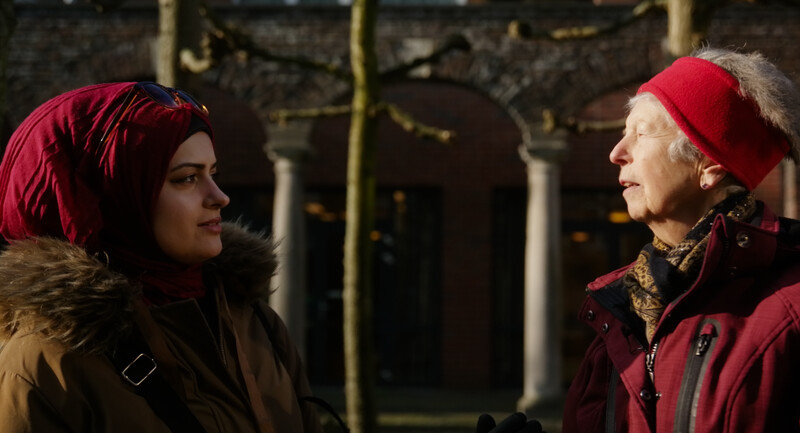
Crushed - Camille Vigny
Demolition derbies, brash and chaotic, are a form of motorsport often associated with warm summer afternoons, the smell of gasoline, and wrecked stock cars. Filmmaker Camille Vigny, however, uses this as a metaphor for the domestic violence she suffered at age 18, described in the documentary Crushed. This first-person account tells a heavy story through a deep connection between text and image.
The film is formed by both Vigny as the narrator and the footage captured at a stock car race. It tells the story of a traumatic relationship, through a not-so-subtle metaphor. It starts off by describing how she and Jean, the abusive counterpart in this dynamic, met. This is accompanied by ambient images of the derby, before the violent racing starts.
The two get tangled up in each other, with Vigny recounting it as becoming whole. As the summer goes on, Jean becomes violent. A “monster”, accompanied by alcohol and a sense of power. The demolition derby is in full force now, with cars destroying others, but most importantly, themselves. This accentuates the feelings of the narrator, with her setting out to ruin herself over her detrimental love for Jean.
Vigny then goes into detail about the violence she suffered, comparing herself to the stock cars. Patched up and put back on the track, only to get beaten again. In the end, though, the cars are at peace: abandoned, broken, but still smoking from the race. It reflects the filmmaker's tense experience with getting out of this relationship. Now alone, but filled with a fleeting sense of hope. It’s a very personal story, with a unique way to show it. It really makes you dive into the emotions she felt.
The visuals used are very well executed. Beautiful shots of the cars, the people at the derby, and scripted elements to further fill in the story. It feels lively, but still within a set style fitting with the subjects discussed. Sound-wise, the film is primarily focused on the poetized voice-over, with background noise from the race setting the scene. It makes you listen intently, but also feel immersed. The coloring works well in conveying the summer feeling, which helps with imagining the events of the narrative. The technical choices support the film well, but that definitely feels necessary with this kind of storytelling. Additionally, works like this make you question what a documentary actually is and how many 'real' components it truly needs. The answer to that is inherently unclear, especially with this modern style of filmmaking.
Crushed is a careful, close observation of Vigny’s encounter with domestic violence. A destructive act like stock car racing makes the perfect backdrop to tell this story, although it doesn't leave much to the imagination. Despite that, this film speaks about an important topic still prevalent for many individuals today. This documentary will resonate deeply with a wide audience. It’s a film that lingers, somewhere between the past and present.
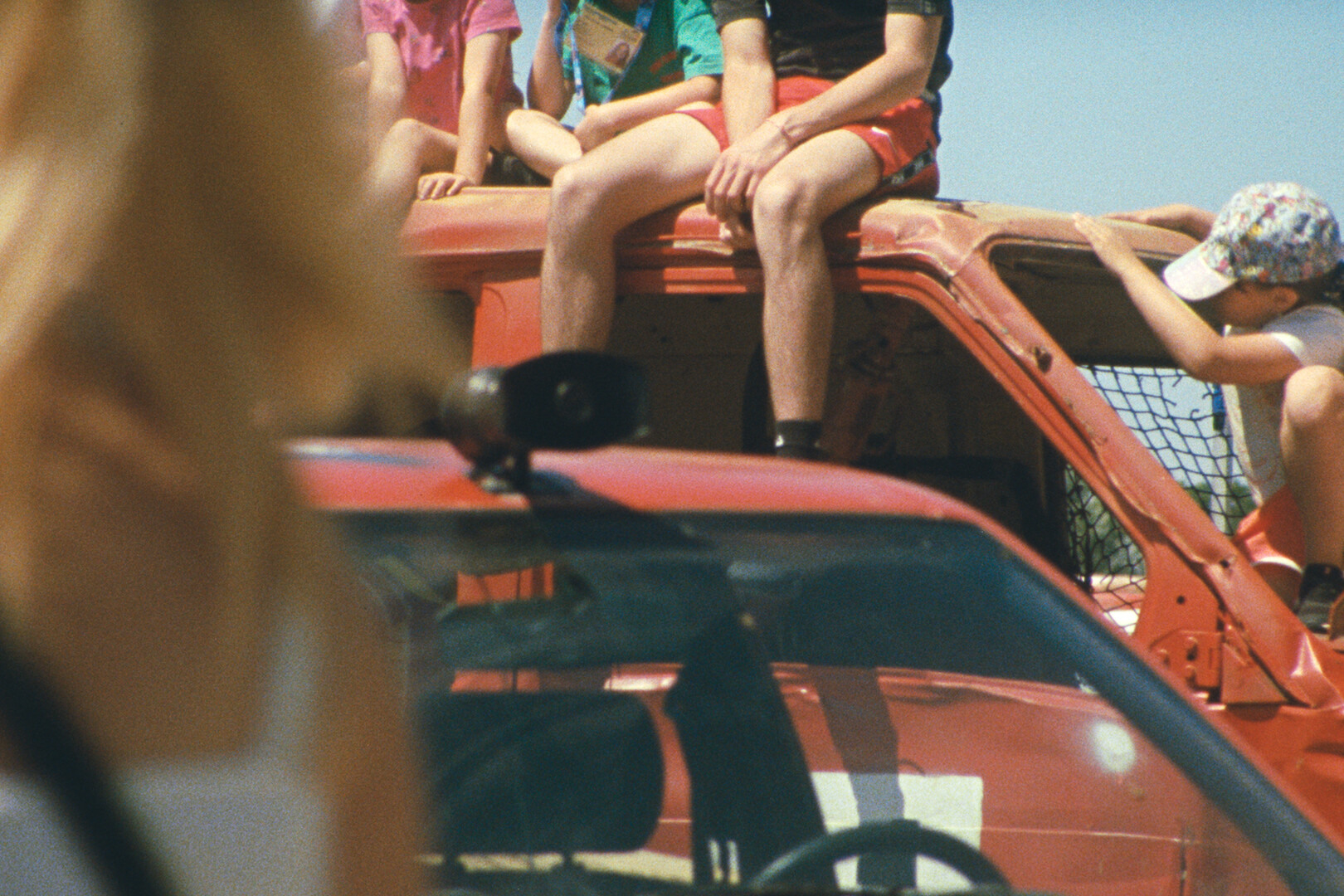
Brainbeats - Silke de Vos
"Music gives a soul to the universe, wings to the mind, flight to the imagination and life to everything." This sentiment resonates deeply in Brainbeats, a short documentary directed by Silke de Vos, which follows ten-year-old Boris and his grandfather Jan on their journey to come to terms with Jan’s form of dementia: Lewy Body.
Boris notices that his grandfather is becoming more forgetful, from not being able to tie his shoelaces to struggling with setting the table. It soon becomes clear that Boris has a fear of being forgotten himself, one he also recognizes in his younger sister. They struggle with how to approach this new reality and find comfort in each other, openly sharing their anxiety about Jan in multiple scenes. Boris eventually finds a creative way to process his feelings. To make a lasting memory for his family, he returns to what connects him and Jan: music. Jan, who plays the violin, accompanies Boris to his DJ classes, where they come up with the idea to make a song together and try to get it on the local radio.
Brainbeats uses the special bond between Boris and Jan, both familial and musical, to tell a story many can relate to. It reminds us that nobody is free from suddenly facing a situation in which we are confronted with disease. The subject is handled with a grace only possible when viewing the world through the eyes of a child. This perspective becomes a strong narrative force, especially in the scenes where the children begin to question medical professionals but also themselves. The questions circling in Boris’s mind are expressed through an internal voice-over, a choice that connects us to him and reveals his changing attitude toward both the disease and his grandfather. It is a clever decision, carried out with a clear purpose. Jan’s story is also visually enhanced through warped and distorted imagery in scenes where he struggles to remember. This adds a thoughtful layer to an otherwise straightforward narrative. He remains the thread that connects the story, though it would have been valuable to see more of Jan’s outlook on his situation and relationship with his grandson. His perspective could have deepened the message further.
The cinematography is warm and personal, fitting for such a heavy subject. We feel like observers to an intimate and fragile situation, while the camerawork remains consistent and open. This shines through in the scenes with Boris and his sister, or when Boris is helping Jan with the DJ booth. Close-up shots and a casual composition create a well thought-out visual story. The sound design reflects the theme as well, heavily incorporating the song created during the documentary. These technical elements complement the story rather than overpowering it.
Brainbeats is down-to-earth, personal, and endearing. The relationship between Boris, Jan and their confrontation with dementia remains the focal point and brings out the heart of the narrative. This story is unique and original while staying grounded in familiar themes. The way the characters feel alive and real sets it apart from similar documentaries, where the disease alone often takes center stage. Lastly, the technical choices work together effectively to keep the viewer engaged. Its story will make you think, and its message will stay with you in a meaningful way.
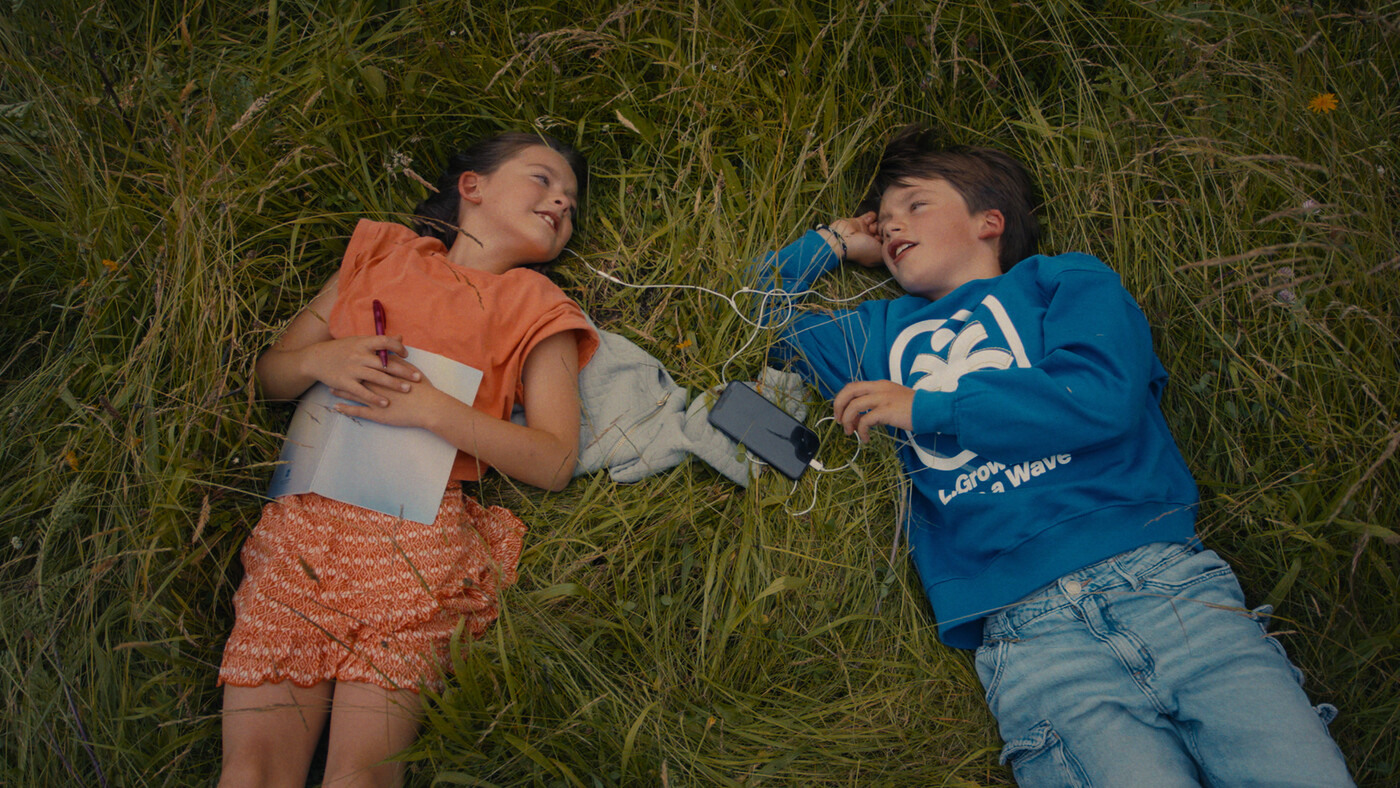
A Long-Standing Story - Anna Lozinska & Daria Mutsaieva
War has a deep effect on everyone involved, whether they are fighting on the frontlines or supporting those who need it most. This documentary, by Anna Lozinska and Daria Mutsaieva, highlights the efforts of many who had to leave their homes in Ukraine and now care for those directly affected by the ongoing struggle. A Long-Standing Story follows two women volunteering at the Blue-Yellow Cross center in Cologne, providing humanitarian aid for their loved ones still in their home country. Their work involves preparing backpacks filled with medical supplies, ready to be sent to the battlefield.
The narrative opens with shots of backpacks being carefully filled, precisely and without missing a thing. Gradually, we are introduced to Vika and Anna, both volunteers at the center. Though they share the same war experience, they live through it in different ways. Vika has recently returned from Ukraine and recounts her journey there, while Anna mentions that she will have to wait until summer to go back. It’s an emotional topic for her, especially since her daughter and husband remain in Ukraine. Her daughter waits for her father, who is actively fighting. As they discuss their current situation, the women meticulously check their work. The materials they prepare can save lives, which makes their role all the more important.
The story highlights the necessity of filling each backpack in the correct order to ensure quick use. A subtle yet powerful reminder of the urgency behind their efforts. Once the packages are full, they are closed and placed with the others. Vika reveals that they have completed over 2,000 backpacks, each one having the possibility of giving a soldier a second chance. As the volunteers mention, it is a long-standing story.
Footage of the volunteers at work supports the narrative. Close-up shots of their hands placing bandages in specific pockets or reaching for new materials accentuate the precision and care required to help those in need. It's simple, yet thoughtful. The sound of crinkling supplies and the women’s conversations further immerse us in the process. This realistic approach makes viewers feel deeply involved in their work. The technical choices reflect the filmmakers’ clear understanding of what they want to tell.
The text at the end reflects on the impact of the volunteers’ efforts, offering a tangible view of what their work provides. Combined with the film’s focus on personal action, it effectively emphasizes the usefulness of taking the time to help in difficult times.
The importance of this film is undeniable. Volunteers often form the backbone of humanitarian support. All it takes is a willingness to act. By providing a unique look into the organizations that make such work possible, ‘’A Long-Standing Story’’ sheds light on an often-overlooked side of war. Hopefully, it will inspire audiences to reflect on their own role in helping during humanitarian crises. After all, it truly takes a village.
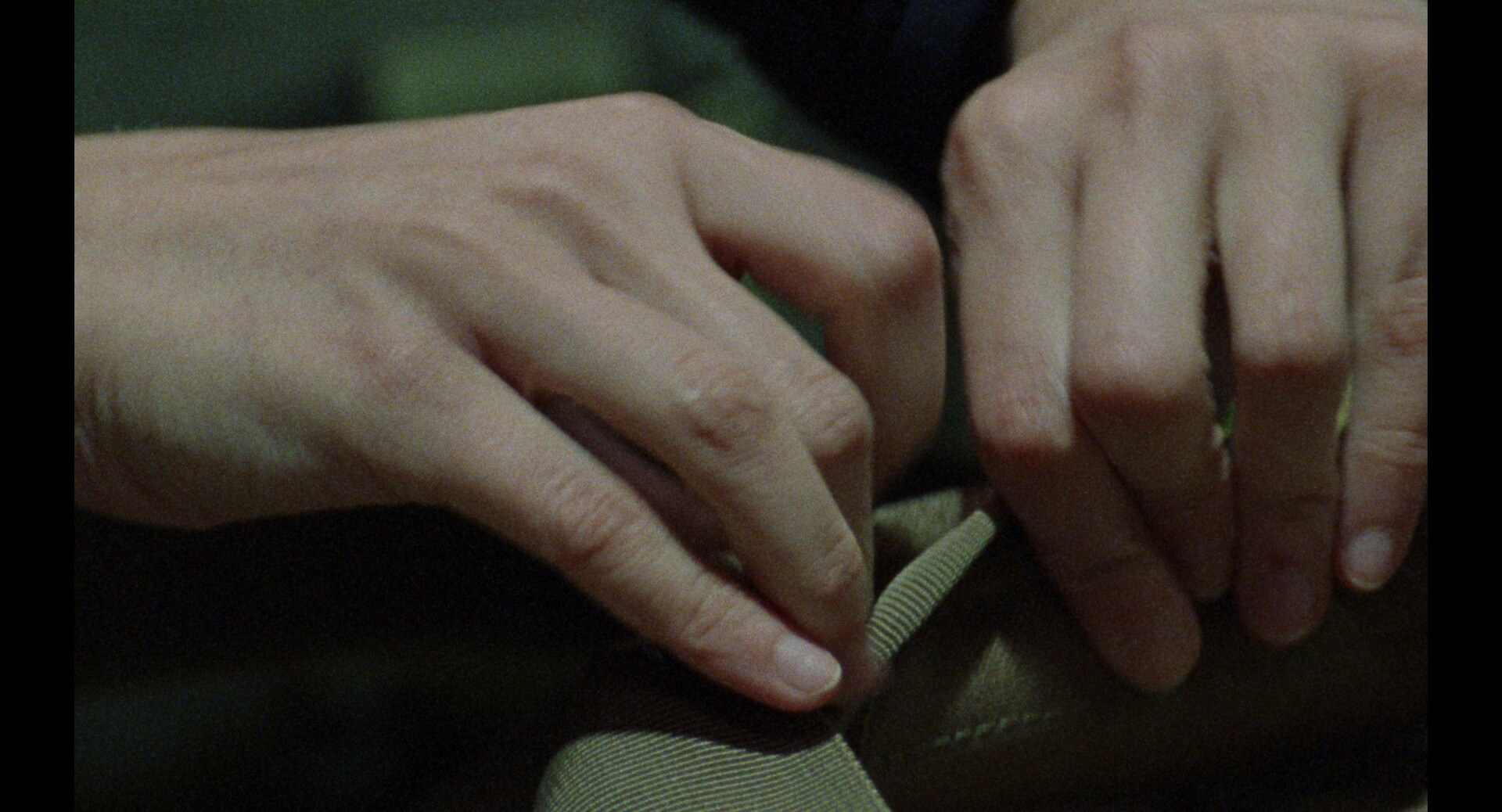
Still by my side - Jasper van Leeningen
Is death the end of existence? For the departed pets in Jasper van Leeningen's short documentary Still by my side, that isn't necessarily true. They get transformed into something that lasts forever through the practice of taxidermy. This process gets the spotlight, especially for what it can mean to someone losing a dear companion. It is an unconventional way to remember a domesticated animal, a choice possibly judged by others. For the three owners featured, it’s a form of love.
The story is first told through the eyes of the taxidermist. It’s a real craft, detailed and heartfelt. We see a small dog being cleaned and formed, made to resemble the living version as closely as possible. The pet belonged to a man who felt less lonely because of it, wanting to keep it close after its passing. We then get to know a bigger dog, whose life was spent as emotional support to a boy with neurological divergence. The parents describe it as a quiet understanding, especially important when they went through tough times. Lastly, we meet a cat. Her caretaker lost her parents and the pet in short succession, making it hard to physically let go. The woman compares it to graves, with this being her preferred way of honoring the dead. They all have fond memories, sharing them with the audience.
They all have something in common: their way of dealing with the loss manifests as a need to still see, feel, or talk to their companion. In the ending sequence, the film reveals the owners together with their now finished taxidermies. There is nothing but love in their eyes, appreciation for this new form of life. The whole story begs you to consider what life is like after death and how we can keep those who left us close, even though it may be seen as controversial by some.
Its technical setup is quite classic, from beautiful close-ups of the taxidermy to emotional footage of the reunited owner and pet. The sound design is fitting and helps create an ambiance that is quite light, even with this theme. The colors chosen help lift the film into something warm. A nice contrast to the coldness of death sprinkled throughout the film. It doesn't feel like the end for these creatures, partly because of the way the cinematography and sound complement the message of the story.
Still by my side feels like consolation to everyone who has experience with having an animal companion. This proves there is a way to keep their memory alive in a more physical form, but it is certainly not for everyone. It becomes clear that it was a perfect option for these owners though, which is heartwarming to see. It is unique in its choice to feature taxidermy on domesticated animals instead of the ones we usually see. The creatures being hunted for sport or put in museums after being remade into something that will always be there. The film itself doesn't try to be something it’s not, leaning into being a classical-style documentary worth seeing.
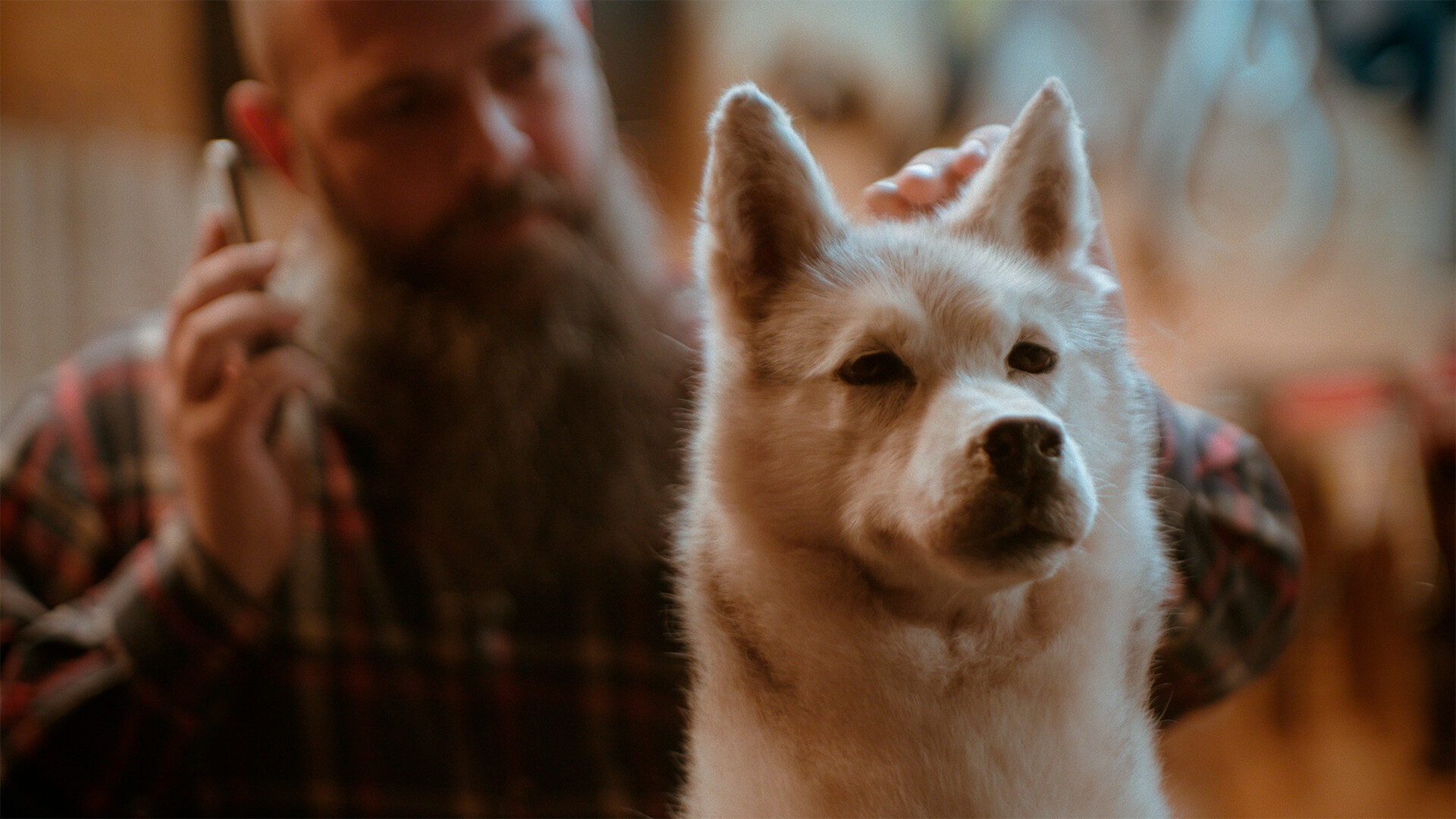
Immature - Eddy Wu
Expressing personal topics through film, especially on queer identity, has fortunately become more common in recent years. This documentary by Eddy Wu also explores these themes, with refreshing animation to tell this story of discomfort and acceptance. ‘’Immature’’ brings the audience on an almost whimsical journey of self-exploration but still feels the down-to-earth effects of the very personal narrative.
We follow a recount that almost feels like a train of thought. Moments that define the creator’s relationship with himself and his body. The separate memories form an overview of his life, the things he considers important to the way he views his identity. From the first time he feels less like a girl to the point where he actually starts transitioning, this story is visually supported by the animation in a playful but impactful way. It’s loose but still cohesive, mainly because of the visual aspect of storytelling. It’s also a very personal film, with the filmmaker telling their own story. This approach could also be a pitfall. We get to know the narrator, but maybe just a little less than necessary to really feel for the person we are supposed to follow. The way Wu opens up about memories that are probably still tender is admirable, though.
The animation really steals the attention of the audience. It is smooth, refreshing, and bold. The bodily imagery really fits the themes of the narrative, transitioning from one thing to another. It adds a new dimension to the way Wu’s memories are discussed. The sound design is also a standout, flowing in the same way as the visuals. It feels almost like an organism, alive and human. You really feel immersed in what is happening on screen. I feel like the heart of the film really lies here, with the technical choices.
Immature is a visual feast, accompanied by a very personal story of identity, gender, and sexuality. It will definitely feel relatable to the audience, especially for those who have struggled or are struggling with these themes. Wu’s raw portrayal of their own choices and feelings, in combination with the animation and sound, makes this a very interesting film.
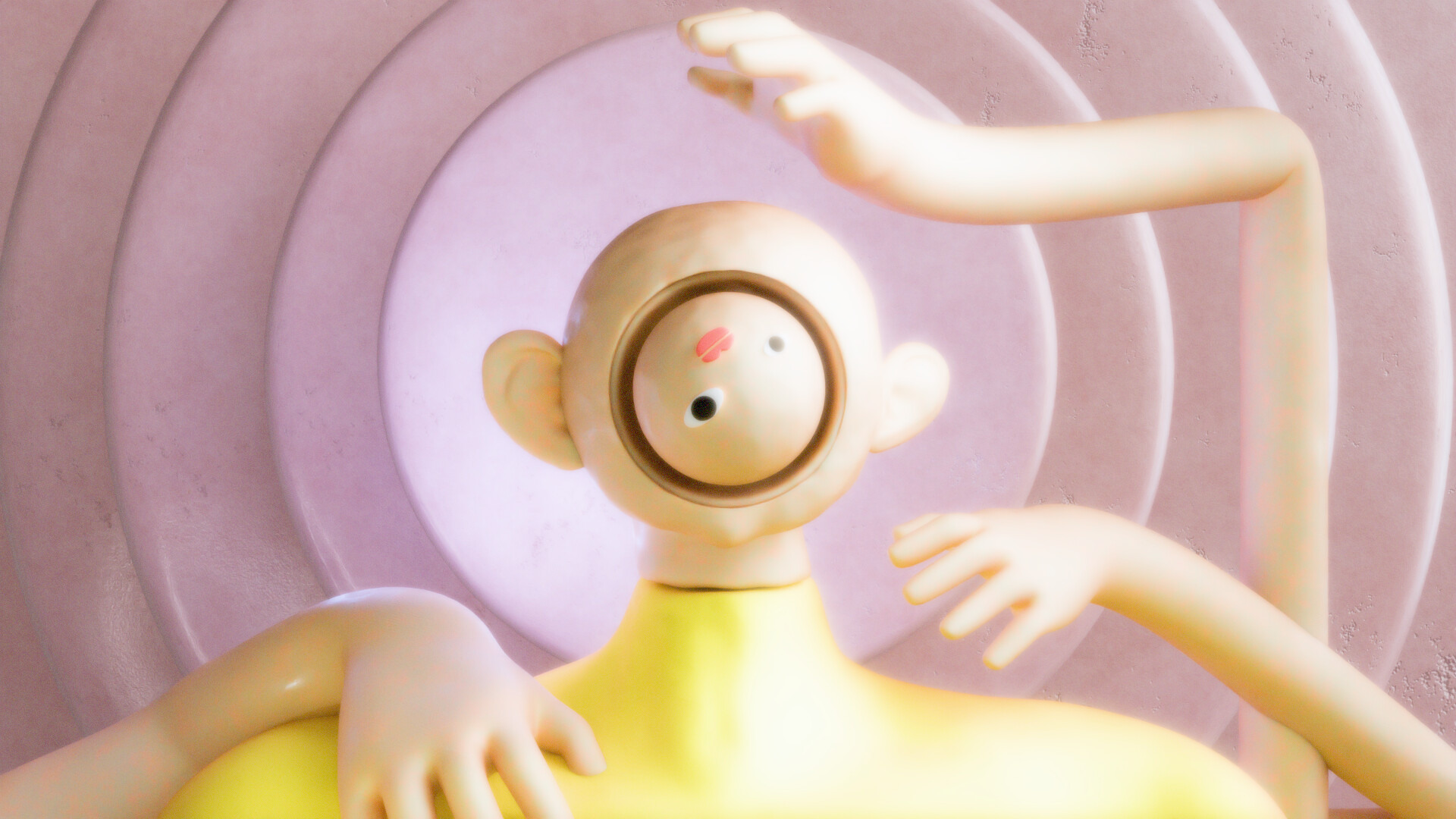
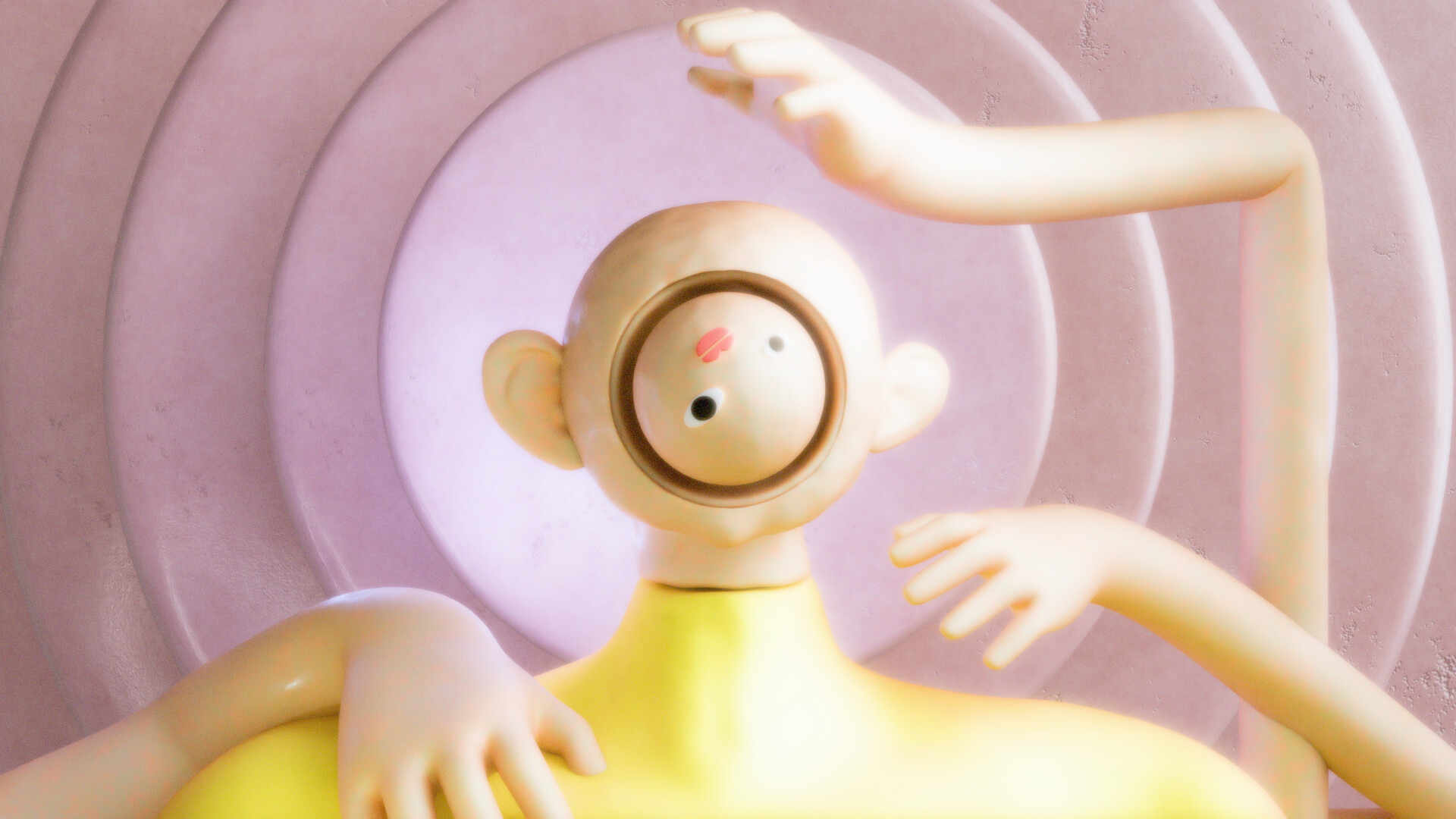
DOCDAYS Industry Day 2025
Including shortDOCs competition.